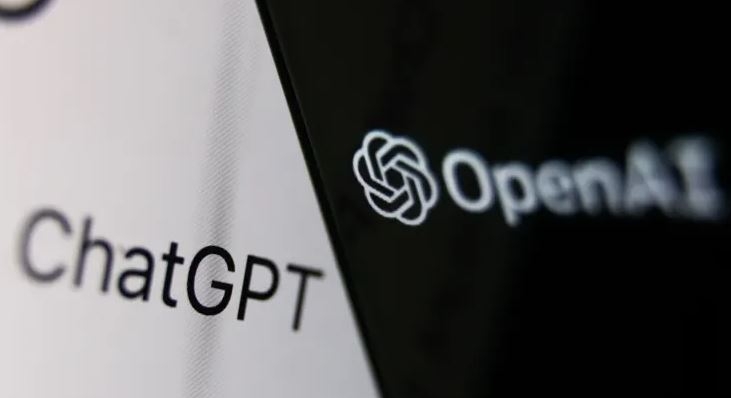Microsoft announced on Monday a “multiyear, multimillion-dollar” investment in OpenAI, the artificial intelligence lab in San Francisco responsible for the experimental internet chatbot ChatGPT.
Microsoft will invest $10 billion in OpenAI, according to a source with knowledge of the situation. The firms did not reveal the particular financial parameters of the acquisition.
Microsoft has already spent more than $3 billion on OpenAI, and the current acquisition is a clear indicator of the significance of OpenAI’s technology to Microsoft’s future and its competitiveness with other large tech firms like Google, Apple, and Meta.
With Microsoft’s vast financial resources and OpenAI’s cutting-edge artificial intelligence, businesses expect to stay at the forefront of generative artificial intelligence – technology that can produce text, pictures, and other material in response to brief instructions. After its unexpected debut at the end of November, ChatGPT, a chatbot that responds to inquiries in crisp, well-punctuated English, became the icon of a new, more powerful wave of artificial intelligence.
These technologies, the product of more than a decade of study at businesses such as OpenAI, Google, and Meta, are set to revolutionize everything from internet search engines such as Google Search and Microsoft Bing to picture and graphics editors such as Photoshop.
Microsoft said last week that it has begun laying off staff as part of an initiative to eliminate 10,000 jobs. According to the company, the modifications, including severance, lease termination, and “changes to our hardware portfolio,” will cost $1.2 billion.
The firm’s CEO, Satya Nadella, said last week that the layoffs will allow the business to emphasize priorities such as artificial intelligence, which he termed “the next significant wave of computing.”
Mr. Nadella made it clear in his company’s Monday announcement that the next phase of the partnership with OpenAI would focus on bringing tools to market, stating that “developers and organizations across industries will have access to the best artificial intelligence infrastructure, models, and toolchain.”
OpenAI was founded in 2015 by a small group of entrepreneurs and artificial intelligence researchers, including Sam Altman, the head of the startup incubator Y Combinator, Elon Musk, the billionaire CEO of electric car manufacturer Tesla, and Ilya Sutskever, one of the most influential researchers of the past decade.
They established the laboratory as a non-profit entity. However, once Mr. Musk departed the firm in 2018, Mr. Altman transformed OpenAI into a for-profit corporation so that it could raise the necessary funds for its research.
A year later, Microsoft put one billion dollars into the firm, and over the following several years, it committed an additional two billion dollars in secret. This money pays for the massive quantities of processing power required to develop the generative A.I. technologies for which OpenAI is renowned.
OpenAI is also in negotiations to conclude a transaction including the sale of existing shares via a so-called tender offer. According to two individuals with knowledge of the conversations, this might reach $300 million, depending on how many workers agree to sell their shares and would value the firm at about $29 billion.
OpenAI created the GPT-3 artificial intelligence system in 2020, which was capable of generating tweets, blog entries, news stories, and even computer code. It introduced DALL-E last year, which allows anybody to make photorealistic visuals just by defining what they want to see.
Based on the same technology as GPT-3, ChatGPT demonstrated to the public the potential power of this kind of technology. During the chatbot’s first few days online, over a million individuals used it to answer trivia questions, explain concepts, and write anything from poetry to term papers.
Microsoft’s products already use GPT-3, DALL-E, and other OpenAI technologies. Microsoft’s renowned online site for programmers, GitHub, includes Copilot, a tool capable of autonomously generating bits of computer code.
Last week, it increased the availability of OpenAI services to Azure cloud computing clients and said that ChatGPT will be “coming shortly.”
The firm plans to release its latest quarterly results on Tuesday, and analysts anticipate that the challenging economy, particularly dropping sales of personal computers and cautious corporate spending, would continue to weigh on revenues.
Since late summer, Microsoft’s growth has slowed, and Wall Street analysts predict the company’s fresh financial figures to show its worst growth since 2016. However, the firm continues to generate considerable earnings and cash. It has continued to distribute capital to investors via quarterly dividends and a share repurchase program approved by its board in 2021 for $60 billion.
Microsoft and OpenAI both claim that their objectives go beyond a better chatbot or programming assistance.
OpenAI’s declared goal was to create artificial general intelligence, or A.G.I., a computer capable of doing every task the human brain can. Mr. Nadella compared A.G.I. to the company’s ambitions to construct a quantum computer, a machine that would be tenfold faster than current computers when OpenAI announced its first partnership with Microsoft in 2019.
That is not always something that scholars know how to construct. However, many feel that technologies such as ChatGPT may help achieve this high objective.
Microsoft may use these technologies soon to develop its company, increase income, and compete with Google and Meta, who are also pursuing A.I. breakthroughs with urgency.
However, the latest A.I. technologies are riddled with problems. Frequently, they generate harmful material, such as disinformation, hate speech, and pictures with prejudice toward women and people of color.
Microsoft, Google, Meta, and other firms have been hesitant to disclose a number of these technologies because of the risk of brand harm. Microsoft launched a chatbot named Tay that produced racist and xenophobic words five years ago but promptly withdrew it from the internet in response to customer concerns.

